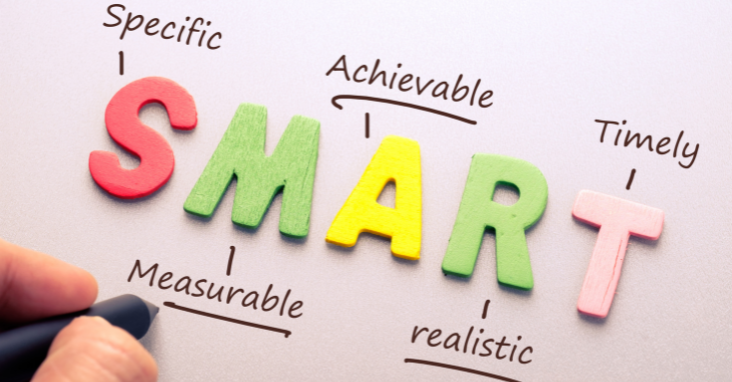Hello there, future leaders! Today, we’re going to dive into a topic that’s crucial for anyone looking to step up their leadership game – leadership goals. But what exactly are they, and why are they so important? Well, stick around, and we’ll explore this together.
What are Leadership Goals?
Leadership goals, in a nutshell, are the objectives or milestones that you set for yourself as a leader. They’re like your personal roadmap, guiding you towards becoming a more effective leader. Whether it’s improving your communication skills, developing active listening skills, fostering a positive team environment, or making better decisions, these goals are all about enhancing your leadership abilities.
Leadership goals are specific objectives that leaders strive to achieve. They typically involve guiding and inspiring a team, fostering a positive work culture, making sound decisions, achieving organizational success, and developing the skills and potential of individuals within the team.
Why are Leadership Goals Important?
Now, you might be wondering, “Why should I bother setting leadership goals?” Well, the answer is simple. Leadership goals are the stepping stones to personal and professional growth. They help you identify your strengths and weaknesses, motivate you to learn new skills, and ultimately, make you a better leader. Plus, they’re not just beneficial for you, but also for your team. When you improve as a leader, your other team member’s performance improves too. It’s a win-win!

What’s in Store for You?
In this blog, we’ll delve deeper into the world of leadership goals. We’ll discuss different types of leadership goals, the benefits of setting them, and how to set effective goals. We’ll also share some strategies to achieve your leadership goals and explore real-life case studies of successful leadership goal setting and achievement. Lastly, we’ll tackle some common challenges in achieving leadership goals and how to overcome them. So, are you ready to embark on this leadership journey? Let’s get started!
Key Points:
Leadership goals are objectives or milestones that you set for yourself as a leader.
They play a crucial role in personal and professional growth.
Leadership goals are beneficial not just for you, but also for your team.
This blog will provide a comprehensive guide on setting and achieving effective leadership goals.

Understanding Leadership Goals
Alright, let’s dive a bit deeper into what leadership goals are all about.
Defining Leadership Goals
Leadership goals are essentially the targets you set for yourself in your journey to becoming a better leader. They’re the skills you want to develop, the behaviors you want to change, or the knowledge you want to acquire. They can be as simple as “I want to improve my public speaking skills” or as complex as “I want to lead my team to exceed our sales targets by 20%”.
The Role of Leadership Goals in Personal and Professional Growth
Leadership goals are like the compass that guides your personal and professional growth. They help you identify where you currently stand as a leader and where you want to go. They push you out of your comfort zone, challenge you to learn new things, and inspire you to become the best leader you can be.
Different Types of Leadership Goals
There are several types of your leadership objectives and goals you can set, depending on your current situation and where you want to be in the future. Some common types include:
Short-term goals: These are goals you aim to achieve in the near future, typically within a year. They could be things like improving your time management skills or learning a new leadership technique.
Long-term goals: These are goals that take more time to achieve, usually over a year. They could be things like earning a leadership certification or leading a major project in your organization.
Personal leadership goals: These are goals related to your personal development as a leader. They could be things like becoming more patient or improving your emotional intelligence.
Professional leadership goals: These are goals related to your professional role as a leader. They could be things like improving your team’s performance or increasing your department’s efficiency.
Key Points:
Leadership goals are targets set to improve leadership skills, behaviors, or knowledge.
They play a crucial role in guiding personal and professional growth.
Leadership goals can be short-term, long-term, personal, or professional.

Importance of Setting Leadership Goals
Now that we’ve got a good grasp on what leadership goals are, let’s talk about why they’re so important.
Benefits of Setting Leadership Goals
Setting leadership goals has a multitude of benefits. For starters, they provide a clear direction for your leadership journey. They help you understand what you need to focus on and what steps you need to take to improve as a leader.
Leadership goals also help you stay motivated. When you have a clear goal in mind, you’re more likely to stay committed and work hard to achieve it. Plus, achieving a goal gives you a sense of accomplishment, which can boost your confidence and motivation to tackle bigger challenges.
Leadership Goals and Effective Leadership
Leadership goals are a key component of effective leadership. They help you develop the skills and qualities needed to lead effectively, such as communication, decision-making, and problem-solving skills. They also help you become more self-aware, which is crucial for understanding your strengths and weaknesses as a leader.
Impact of Leadership Goals on Team Performance
Your leadership goals don’t just affect you as business leader – they also have a significant impact on your team. When you improve as a leader, your team benefits too. Effective leadership can boost team morale, improve communication, and increase productivity. Plus, when your team sees you setting and achieving your goals, it can inspire them to set and achieve their own goals.
Key Points:
Setting leadership goals provides direction, boosts motivation, and contributes to effective leadership.
Leadership goals have a significant impact on team performance.
Achieving leadership goals can inspire your team members to set and achieve their own goals.

Examples of Leadership Goals
Now that we understand the importance of setting leadership goals, let’s look at some examples to get your creative juices flowing.
Short-term Leadership Goals
Short-term leadership goals are those you aim to achieve in the near future. Here are a few examples:
Improve your public speaking skills.
Learn a new leadership technique.
Improve your time management skills.
Foster a more positive team environment.
Improve your decision-making process.
Long-term Leadership Goals
Long-term leadership goals are those that take more time to achieve. Here are a few examples:
Earn a leadership certification.
Lead a major project in your organization.
Develop a high-performing team.
Improve your organization’s overall performance.
Become a mentor for other leaders in your organization.
Personal Leadership Goals
Personal leadership goals are those related to your personal development as a leader. Here are a few examples smart leadership here:
Become more patient.
Improve your emotional intelligence.
Develop a more positive mindset.
Become more self-aware.
Improve your work-life balance.
Professional Leadership Goals
Professional leadership goals are those related to your professional role as a leader. Here are some leadership smart goals examples as a few examples:
Improve your team’s performance.
Increase your department’s efficiency.
Develop a new strategy for your organization.
Improve your organization’s customer satisfaction ratings.
Increase your organization’s market share.
Key Points:
Leadership goals can be short-term, long-term, personal, or professional.
Examples of leadership goals include improving public speaking skills, earning a leadership certification, becoming more patient, and improving team performance.

How to Set Effective Leadership Goals
Setting leadership goals is one thing, but setting effective leadership goals is another. So, how do you set smart leadership goals, that are not only achievable but also help you grow as a leader? Let’s find out.
Understanding Your Leadership Style
The first step in setting effective leadership goals is understanding your leadership style. Are you a democratic leader who values input from your team? Or are you an autocratic leader who prefers to make decisions on your own? Understanding your leadership style can help you make smart leadership goal and identify areas where you excel and areas where you need improvement.
Identifying Areas for Improvement
Once you understand your leadership style, the next step is to identify areas for improvement. This could be anything from improving your communication skills to becoming more patient. Be honest with yourself during this process. It’s okay to admit that you have weaknesses. In fact, recognizing your weaknesses is the first step towards improving them.
Setting SMART Goals
Now that you’ve identified areas for improvement, it’s time to set your goals. But not just any goals – SMART goals. SMART stands for Specific, Measurable, Achievable, Relevant, and Time-bound.
Specific: Your goal should be clear and specific. Instead of saying “I want to be a better leader”, say “I want to improve my communication skills”.
Measurable: Your goal should be measurable. This means you should be able to track your progress and know when you’ve achieved your goal.
Achievable: Your goal should be achievable. It’s good to aim high, but make sure your goal is something you can realistically achieve.
Relevant: Your goal should be relevant to your role as a leader. If it doesn’t help you improve as a leader, it’s not a good leadership goal.
Time-bound: Your goal should have a deadline. This creates a sense of urgency and motivates you to start working towards your goal.
Creating a Plan of Action
The final step in setting effective leadership goals is creating a plan of action. This is a detailed plan that outlines the steps you need to take to achieve your goal. It should include what actions you’ll take, when you’ll take them, and any resources you’ll need.
Key Points:
– Setting effective leadership goals involves understanding your leadership style, identifying areas for improvement, setting SMART goals, and creating a plan of action.
– SMART goals are Specific, Measurable, Achievable, Relevant, and Time-bound.
– A plan of action outlines the steps needed to achieve your goal.

Strategies to Achieve Leadership Goals
Setting leadership goals is just the first step. The real challenge lies in achieving them. But don’t worry, we’ve got some strategies to help you out.
Regular Self-Assessment and Reflection
Regular self-assessment and reflection is a crucial part of achieving your leadership goals. It helps you track your progress, identify any obstacles, and adjust your plan of action if needed. Make it a habit to reflect on your self awareness and progress at the end of each day, week, or month, depending on your goal. Pro Tip: Schedule a weekly meeting with at least one person who directly reports to you in order to practice active listening.
Seeking Feedback from Others
Don’t hesitate to seek feedback from others. This could be each team member, team leaders, peers, or superiors. They can provide valuable insights into your leadership skills and help you identify areas for improvement that you might have overlooked. Constructive criticism can help you grow as a leader. You can request feedback during team meetings to help you identify areas you might have missed when you created your action plan or where you could improve. This goal is relevant because effectively dealing with constructive criticism is a crucial leadership skill that enables a leader to accept feedback, learn from it, and make necessary improvements, which in turn fosters a positive work environment, enhances team performance, and contributes to overall organizational success.
Be More Adaptable
Leaders today must be prepared for rapid change and disruption— no matter their industry. Most people naturally resist change, so learning and practicing adaptability is an essential leadership skill.
Hire a Well-Rounded Team
A well-rounded team with diverse perspectives is a strong asset to any company. To achieve this as a leadership goal, you may want to look into higher diverse or global candidates, pair teams together, and emphasize fresh perspectives. Pro Tip: A way to achieve this could be to implement blind hiring practices in your HR department and work to eliminate any biases
Continuous Learning and Development
Leadership is a journey, not a destination. This means you should always be learning and developing, even after you’ve achieved your goal. Attend leadership workshops, read leadership books, or take leadership courses. The more you learn, the better leader you’ll become.
Embracing Challenges and Learning from Failures
Finally good leaders, don’t be afraid of challenges and failures. They’re a natural part of the leadership journey. In fact, they’re often the best learning opportunities. So, embrace them, learn from them, and use them to become a better leader.
Key Points:
Achieving leadership goals involves regular self-assessment and reflection, seeking feedback from others, continuous learning and development, and embracing challenges and failures.
Feedback from others can provide valuable insights into your leadership skills.
Challenges and failures are often the best learning opportunities.

Case Studies of Successful Leadership Goal Achievement
To give you a better understanding of how leadership goals can be achieved, let’s look at some real-life case studies.
Case Study 1
Let’s start with a leader who set a goal to improve her team’s performance. She started by identifying the issues that were affecting her team’s performance, such as poor communication and lack of motivation. She then set SMART goals to address these issues and created a plan of action. She sought feedback from her team, adjusted her plan based on their positive feedback often, and regularly assessed her progress. Within a year, her team’s performance improved significantly.
Case Study 2
Next, let’s look at a leader who set a goal to become more patient. He started by understanding his triggers and identifying situations where he needed to be more patient. He then set a SMART goal to improve his patience and created a plan of action. He practiced mindfulness techniques, sought constructive feedback often from his team, and regularly reflected on his progress. Over time, he became more patient, which improved his relationships with his team.
Key Points:
The first case study shows how a leader improved her team’s performance by setting SMART goals, seeking feedback, and regularly assessing her progress.
The second case study shows how a leader became more patient by understanding his triggers, practicing mindfulness techniques, and seeking feedback.
These case studies demonstrate that with the right strategies, leadership goals can be achieved.

Common Challenges in Achieving Leadership Goals and How to Overcome Them
Achieving leadership goals is not always a smooth journey. There can be several challenges along the way. But don’t worry, we’ve got some tips to help you overcome these challenges.
Identifying Potential Obstacles
The first step in overcoming challenges is to identify potential obstacles. This could be anything from lack of time to lack of resources. Once you’ve identified the obstacles, you can create a plan to overcome them.
Strategies to Overcome Challenges
Here are some strategies to overcome common challenges in achieving leadership development goals:
Lack of Time: If you’re struggling with time management, try prioritizing your tasks, delegating tasks, or using time management tools.
Lack of Resources: If you’re lacking resources, try seeking help from others, using online resources, or finding creative solutions.
Lack of Motivation: If you’re lacking motivation, try setting smaller, achievable goals, rewarding yourself for achieving goals, or finding a mentor to keep you motivated.
Fear of Failure: If you’re afraid of failure, try changing your mindset, embracing failures as learning opportunities, or seeking support from others.
Key Points:
Common challenges in achieving leadership goals include lack of time, lack of resources, lack of motivation, and fear of failure.
Strategies to overcome these challenges include prioritizing tasks, seeking help, setting smaller goals, rewarding yourself, changing your mindset, and seeking support.
Identifying potential obstacles and creating a plan to overcome them is crucial for achieving leadership goals.

Conclusion
And there you have it – a comprehensive guide on setting and achieving leadership goals. Remember, leadership goals are not just about improving your skills or knowledge. They’re about becoming a better leader for your team and your organization. So, don’t be afraid to set ambitious goals and work hard to achieve them. You’ve got this!
Key Points:
Leadership goals are crucial for personal and professional growth.
Setting effective leadership goals involves understanding your leadership style, identifying areas for improvement, setting SMART goals, and creating a plan of action.
Achieving leadership goals involves regular self-assessment and reflection, seeking feedback from others, continuous learning and development, and embracing challenges and failures.
Overcoming challenges in achieving leadership goals involves identifying potential obstacles and creating a plan to overcome them.
Now, it’s your turn. What are your leadership goals? How do you plan to achieve them? If you found this blog helpful, don’t forget to share it with your fellow leaders. Let’s grow together!
Compare hundreds of HR Management Software in our Software Marketplace















